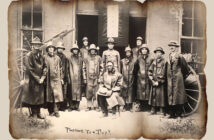Old pond
A frog jumps in –
The sound of water
The poem above is one of the most beloved and well-known haikus in all of Japan written by Matsuo Basho, a master of the artform. The Haiku is a form of Japanese poetry that reflects the relationship of nature and the Zen mind of the human condition. Haikus were created by Zen Buddhist monks and typically contain a total of 17 syllables shared between three lines of text. The English version of the Haiku systematically employs a 5-7-5 syllable line allocation. For example, the Haiku above has often been reworked in the 5-7-5 format to be:
An old silent pond …
A frog jumps into the pond,
Splash! Silence again.
The 5-7-5 approach is a rough approximation of the true art form. The original Japanese haiku is measured in sounds or breaths, not syllables. Many traditional poems are much shorter than the standard English format. Other characteristics of traditional haiku are:
- Two subjects are placed in juxtaposition.
- The two subjects are often separated by punctuation.
- An unusual observation is made in comparison.
- The poems are traditionally about nature and the seasons.
Another perfect example of traditional haiku is from Murakami Kijo, another master craftsman of the artform:
First autumn morning:
The mirror I stare into
Shows my father’s face.
The end result of haiku should be the profound serenity of a moment in time and nature. Look outside your window. What do you see and feel? Put it into words and write your own haiku. Breathe, reflect and enjoy your Zen moment.
Here are a few more classics from the masters:
In nooks and corners
Cold remains
Flowers of the plum
– Yosa Buson
The cold wintry wind
Is blowing so hard that
The sun sinks into the ocean
– Natsume Soseki
In the twilight rain
These brilliant-hued hibiscus –
A lovely sunset
– Matsuo Basho
The lamp once out
Cool stars enter
The window frame.
– Natsume Soseki








